All Wings Must Pass: As an era comes to an end in Detroit, there's stories to share

Want a beer?
Go ahead. Al just fired up the grill. O.K., technically it’s a reconfigured old nacho stand, not a grill. And officially Al Sobotka is the building operations manager, not a cook. But nobody here cares about that stuff. Al fills it with charcoal and holds a cookout in the arena a few times a year. Yes, cookouts inside an NHL arena. But the Joe is not just any arena, you see. It’s a ... well ... the right word is probably ...
Dump?
Hey, now. Be nice. Sure, it is kind of a dump. The concourses are too narrow. The restrooms are too few and therefore too crowded. The whole place looks as if it was built after somebody cut the budget in half. Who builds a riverfront arena with no windows? But it has the best sight lines in the NHL and all sorts of accidental character. You’ll be amazed at how many people will miss this place when it closes this spring. Grandmothers will get misty. Grown men will cry into their beer.
Speaking of beer....
Oh, right. Grab one from the stack, right there by the Zamboni. The delivery trucks leave it there because there is no place else to put it. There is only one loading dock, and it’s not sealed off like in those new sporting palaces. That’s why, whether you show up for a morning skate or an evening playoff game, the first thing that hits you is the unmistakable stench of beer. It never goes away. Joe Louis Arena always smells as if it hosted a party that lasted way longer than anybody had expected ... which, in a way, it has.
***
The Detroit Red Wings have made the NHL playoffs every season since 1990–91. The streak, the third longest in pro sports history, has survived four league work stoppages, five presidential administrations, radical NHL rules changes, the influx of European talent and the advent of a salary cap. When it started, Gary Bettman worked for the NBA, where people were wondering if Michael Jordan would ever win a championship. Peyton Manning was a high school freshman. You could walk into Sears and buy a black-and-white TV, then watch news reports about the Soviet Union, which still existed.
‘The baddest bowl in the NHL’: Inside Detroit’s new Little Caesars Arena
It is the greatest streak in professional sports. Yes, San Antonio Spurs and New England Patriots, we hear your objections. Overruled. Sure, the Spurs are completing their 20th straight winning season, an NBA record, but 19 of them came with former No. 1 overall pick Tim Duncan, and all came with the same coach, Gregg Popovich. Same goes for the Patriots: Tom Brady plus Bill Belichick, over and over.
Those teams rode the same thoroughbreds. The Red Wings, meanwhile, seem to have little trouble jumping from horse to horse. During this 25-season run (which has actually lasted 26 years, thanks to the 2004–05 lockout), they have employed five head coaches, three front-office leaders and three captains. They have clinched Stanley Cups on the backs of three separate netminders and had eight different men lead the team in season scoring.
Oh, and the Red Wings have not drafted in the top 10 since 1991. From ’92 to 2013 they picked no higher than 19th.
It started like any old run-of-the-mill dynasty. Detroit drafted wisely; its 1989 draft, which included future Hall of Famers Nick Lidstrom in the third round and Sergei Fedorov in the fourth, may be the best in league history. The Red Wings made smart free-agent signings. They anticipated the European talent infusion. As the team contended, owner Mike Ilitch pushed payroll so high that Detroit needed playoff runs to turn a profit.
These various factors led to Stanley Cup titles in 1997, ’98 and 2002, during the franchise’s peak. The Wings were not just a great hockey team, they were rock stars, performing in the NHL’s least pretentious arena, in a city that otherwise seemed on the verge of abandonment. Those Wings proved that Detroit could still have the best and the most expensive, even if it was just a hockey team. Even Sobotka became a cult figure. When Red Wings fans threw octopi on the ice during the playoffs, an old Detroit tradition, Sobotka twirled them around his head, and the crowd roared. Players loved him for maintaining the ice surface—and, of course, for grilling all that chicken, baby-back ribs and Italian pork sausage after practice sometimes.
This tastes like chicken sausage.
Well, that’s because it is chicken sausage. Al stopped grilling Italian sausages when NHL players got nutrition-savvy. Anyway, dig in. We’ve got stories to share.
***
Al can tell you about the time he was grilling during practice, and the arena filled with smoke. Scotty Bowman, then the coach, pulled everybody off the ice. He looked furious. But, Sobotka insists, “he pretended like he was mad, but he wasn’t mad. He was the first one in line to eat.”
Bowman, who manned Detroit’s bench from 1993 to 2002, always kept people guessing. It was part of his genius.
And there was the time Ilitch—Mr. I to anybody who worked for him—signed star Brett Hull when payroll was already too high. Mr. I knew his wife, Marian, would call it fiscally imprudent, and he knew she was right. So he didn’t tell her about the deal until it was done.
Farewell To The Joe
Championship banners, 2017
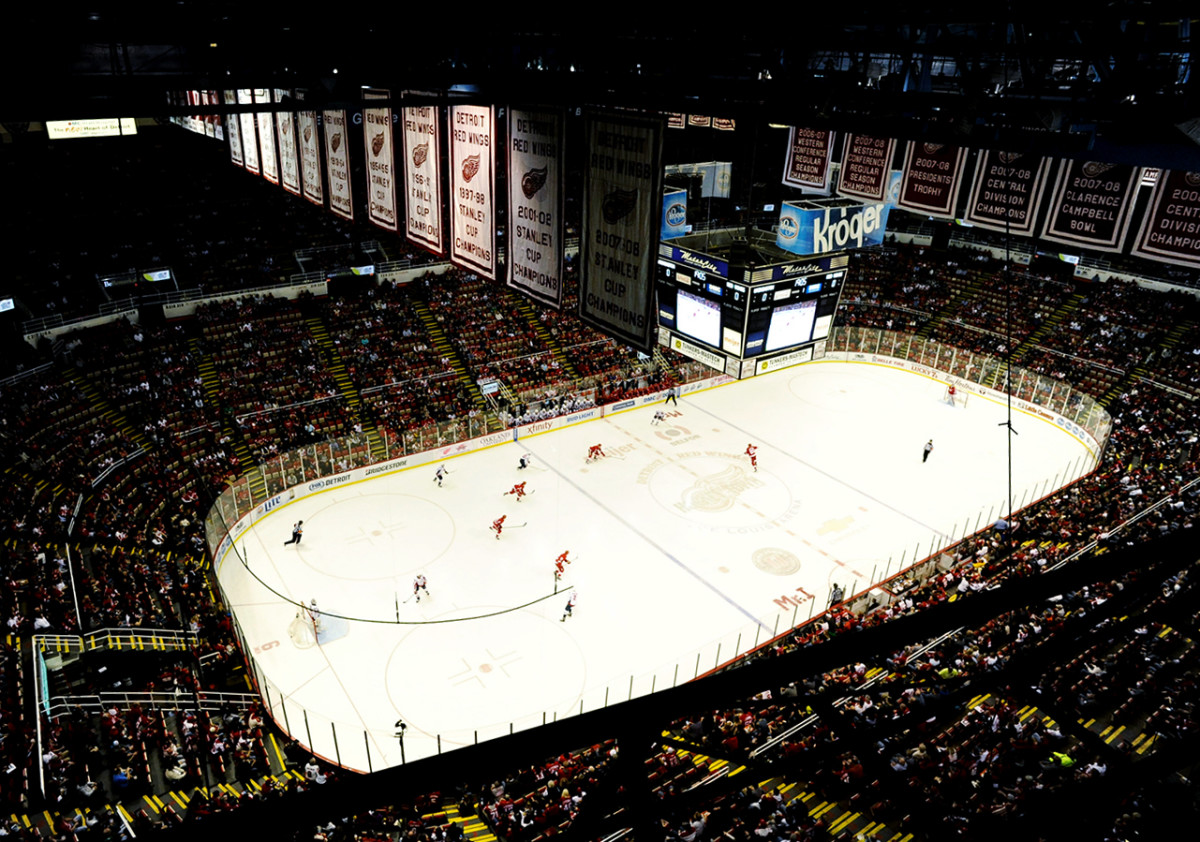
Nicklas Lidstrom and goalie Jimmy Howard cover the net, 2011
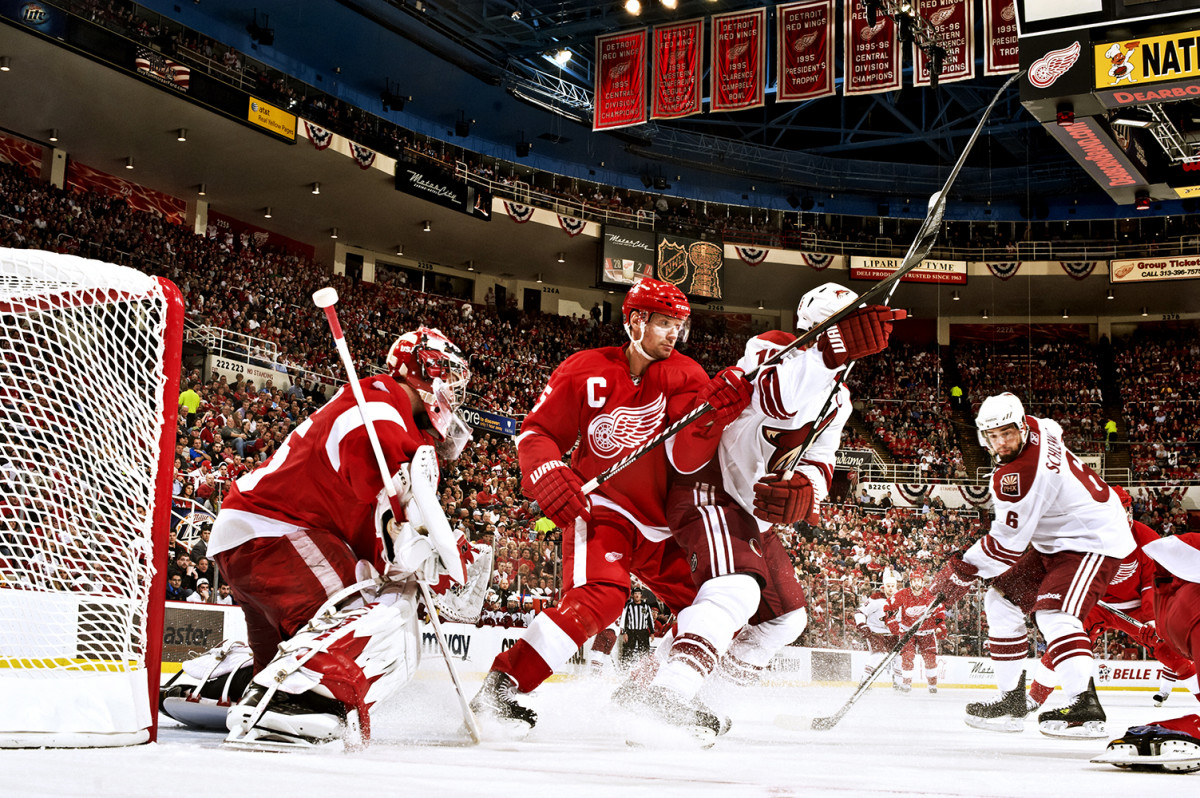
Fans at Gordie Howe statue, 2017
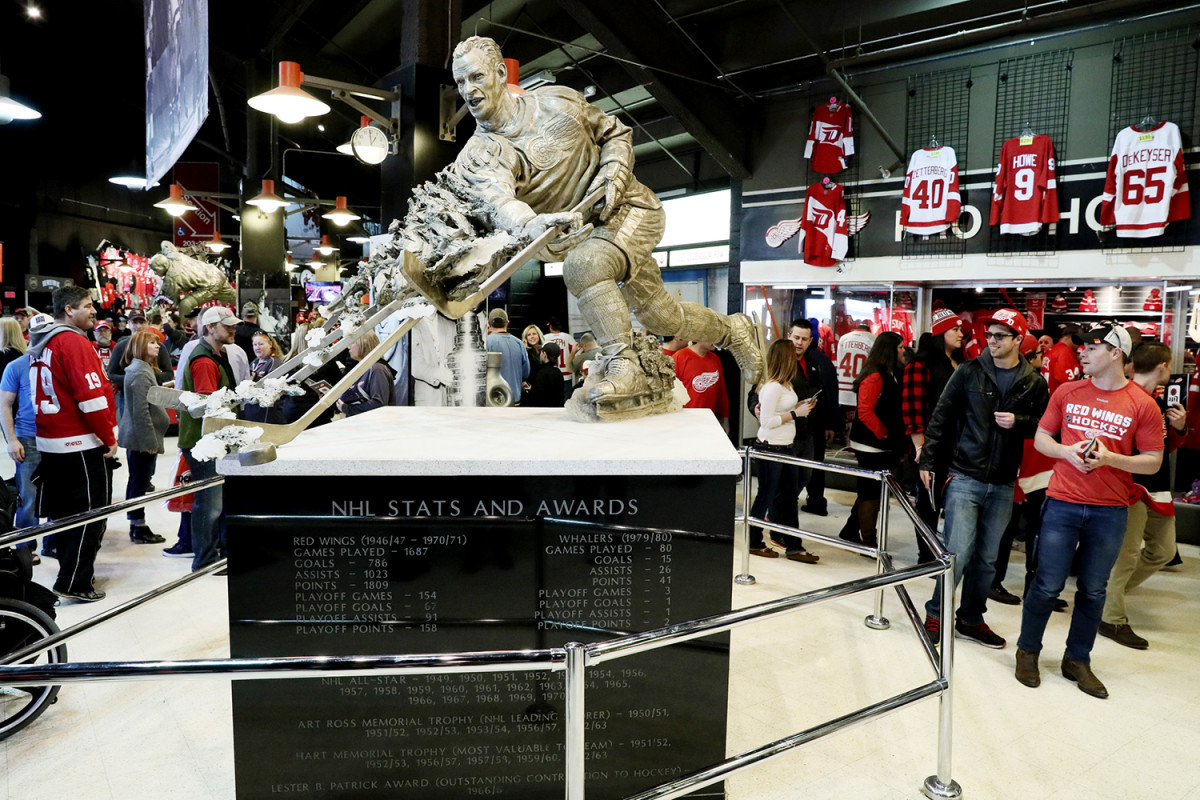
Cup-crazy fans, 1999
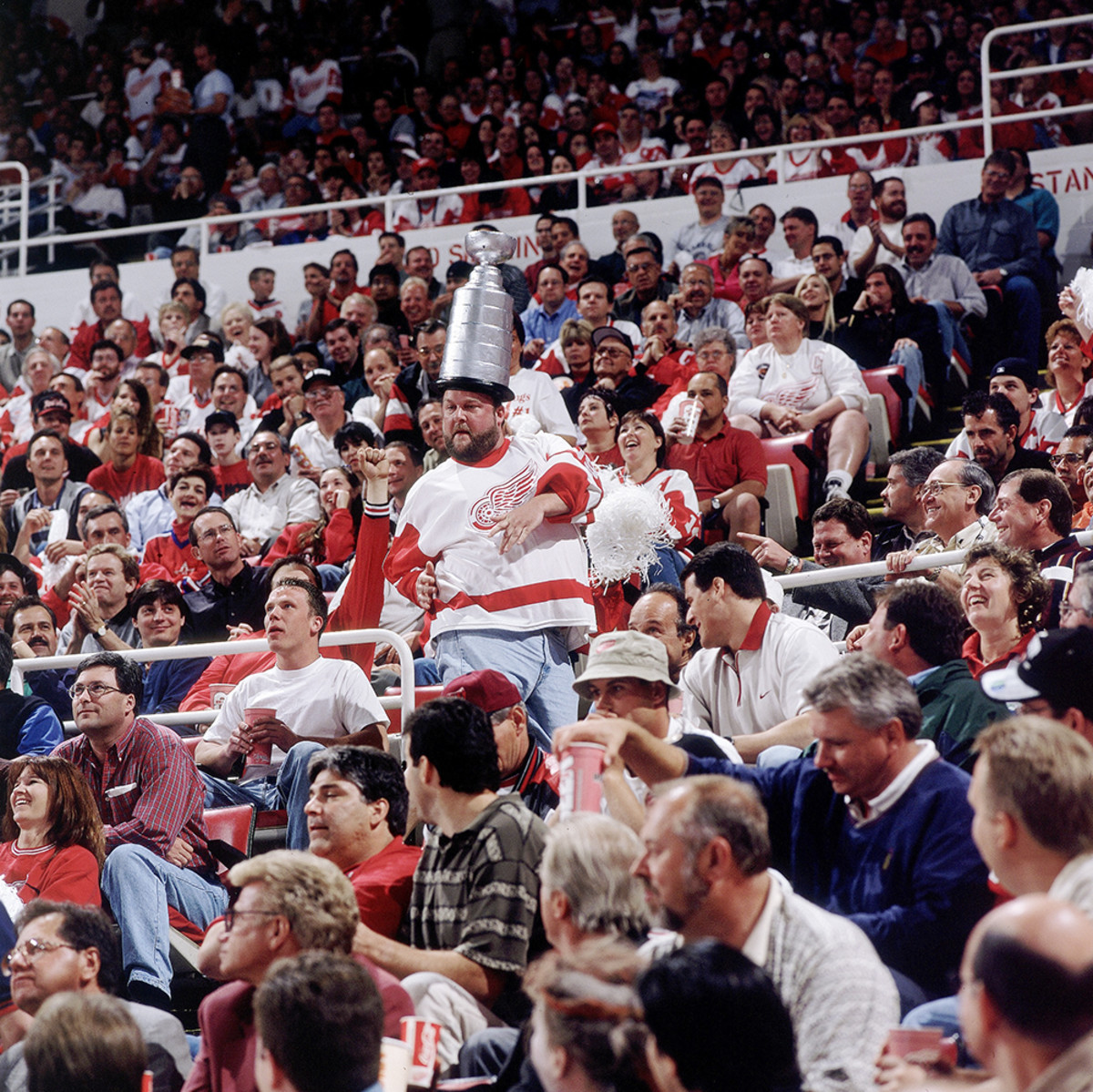
Brendan Smith steals the faceoff, 2017
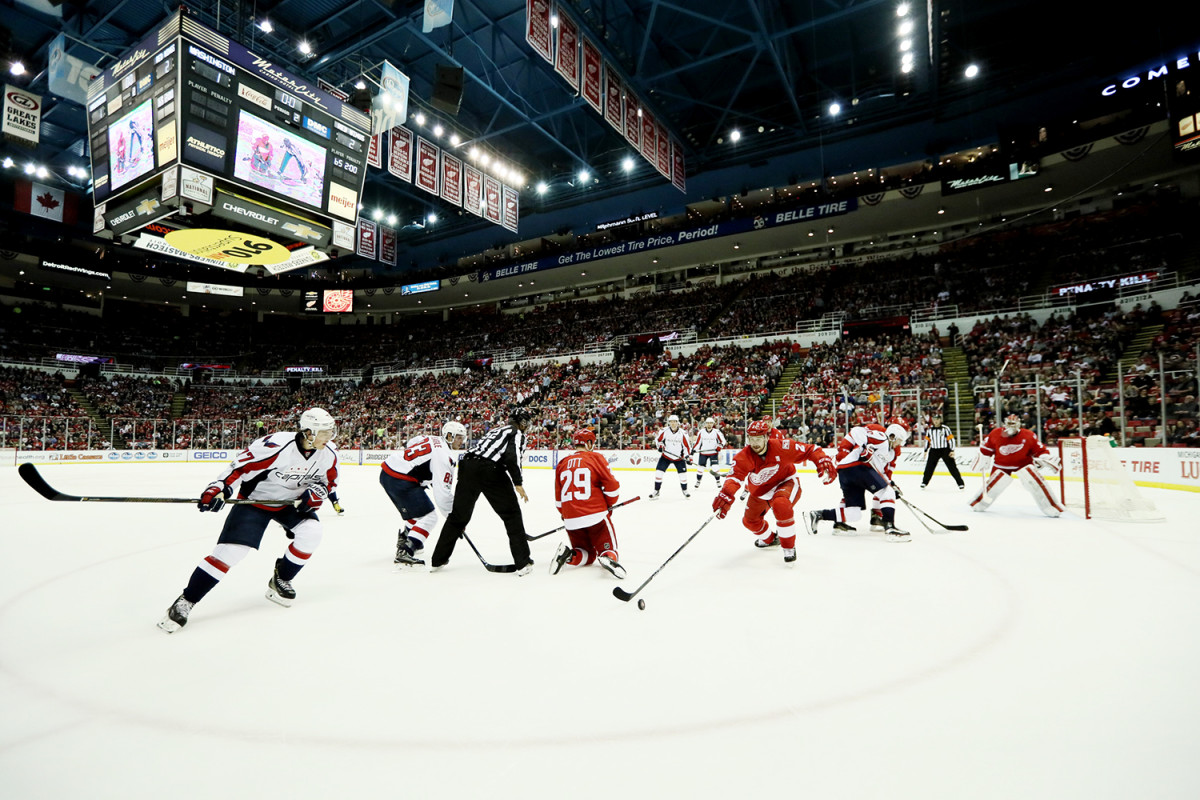
Valtteri Filppula scores, 2007
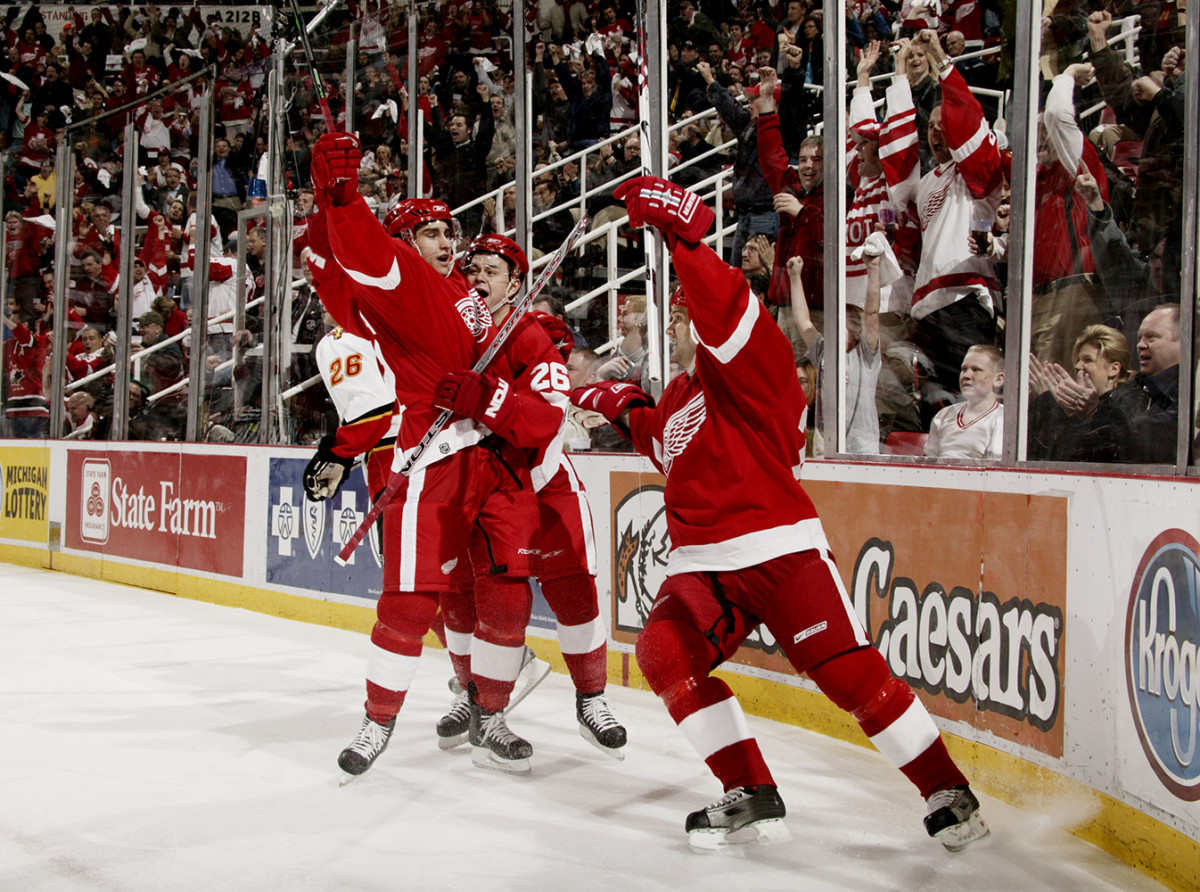
Players’ entrance, 2017
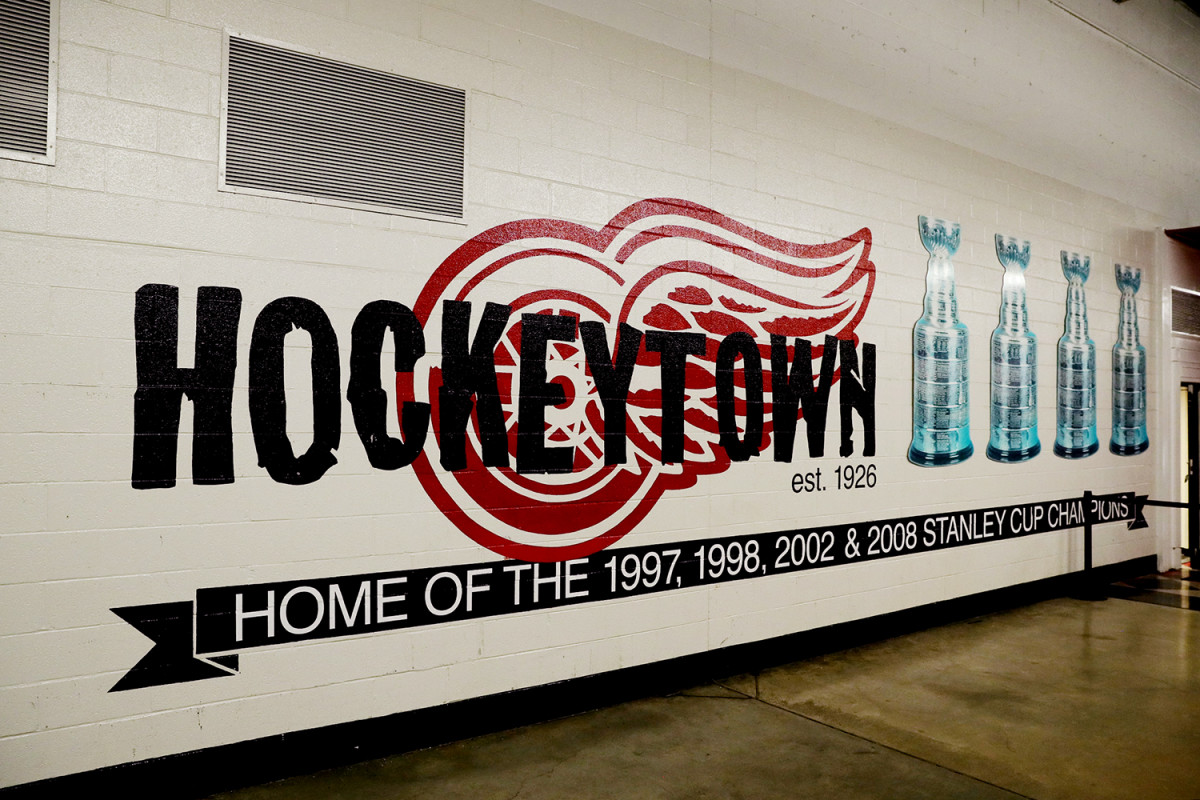
Pregame spectacle, 2009
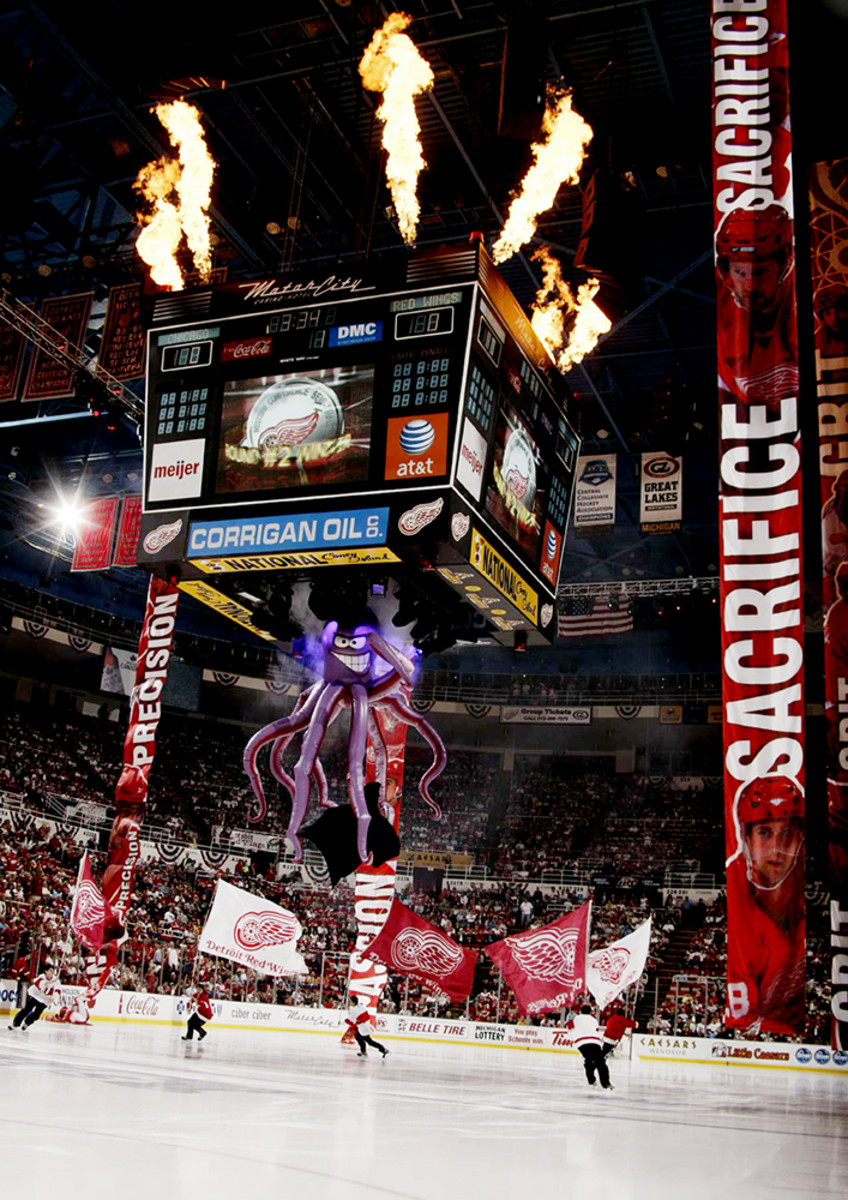
Xavier Ouellet defends, 2017
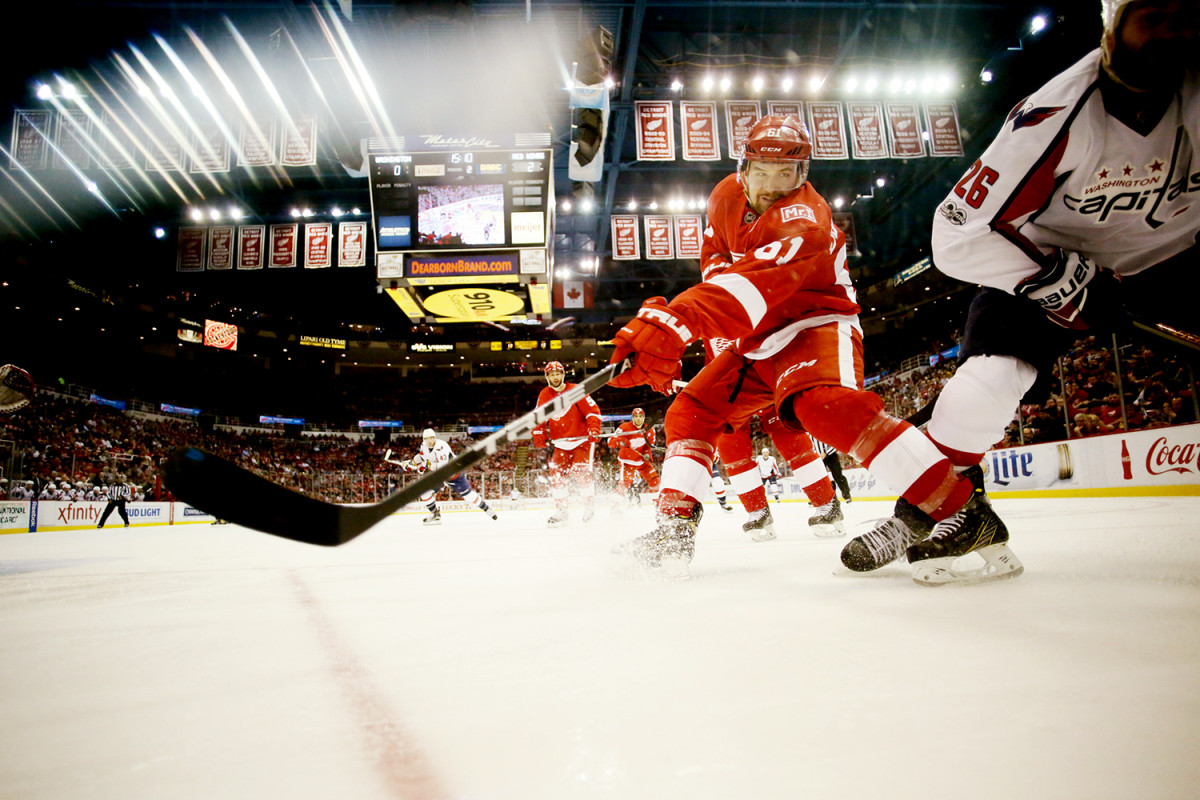
Dominik Hasek lifts the Stanley Cup, 2002
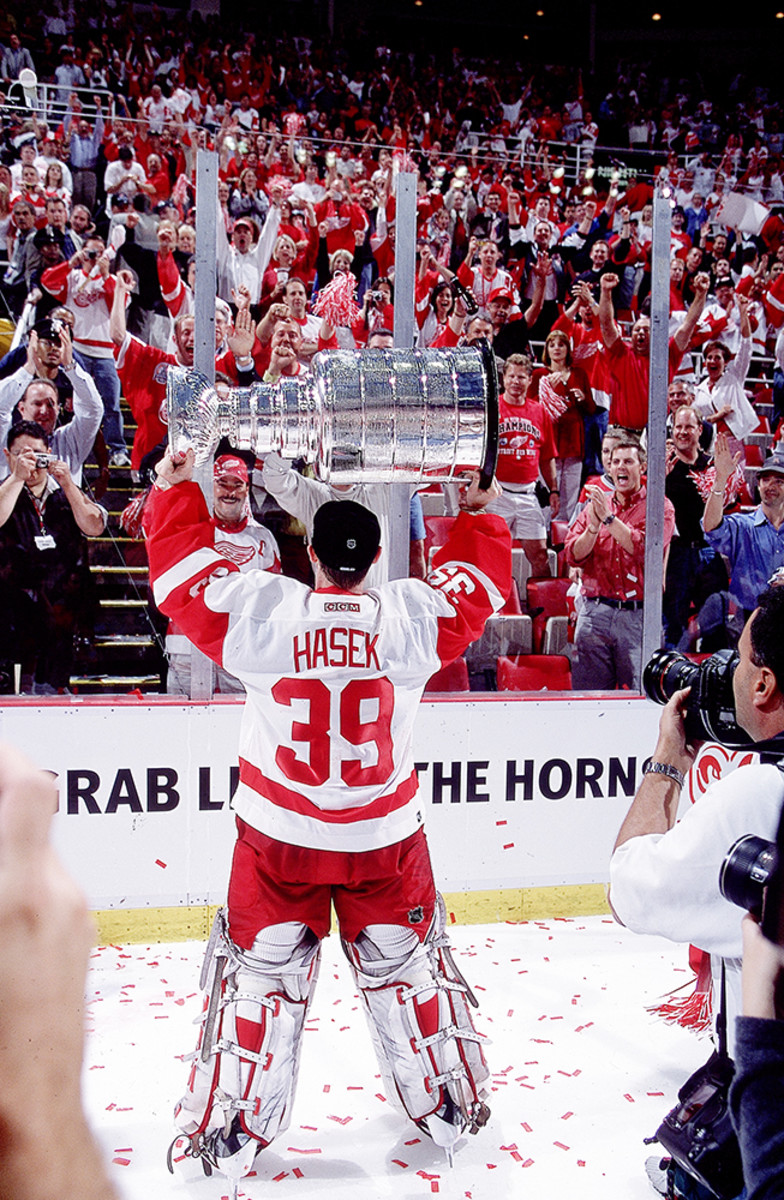
Fans at the merchandise booth, 2017
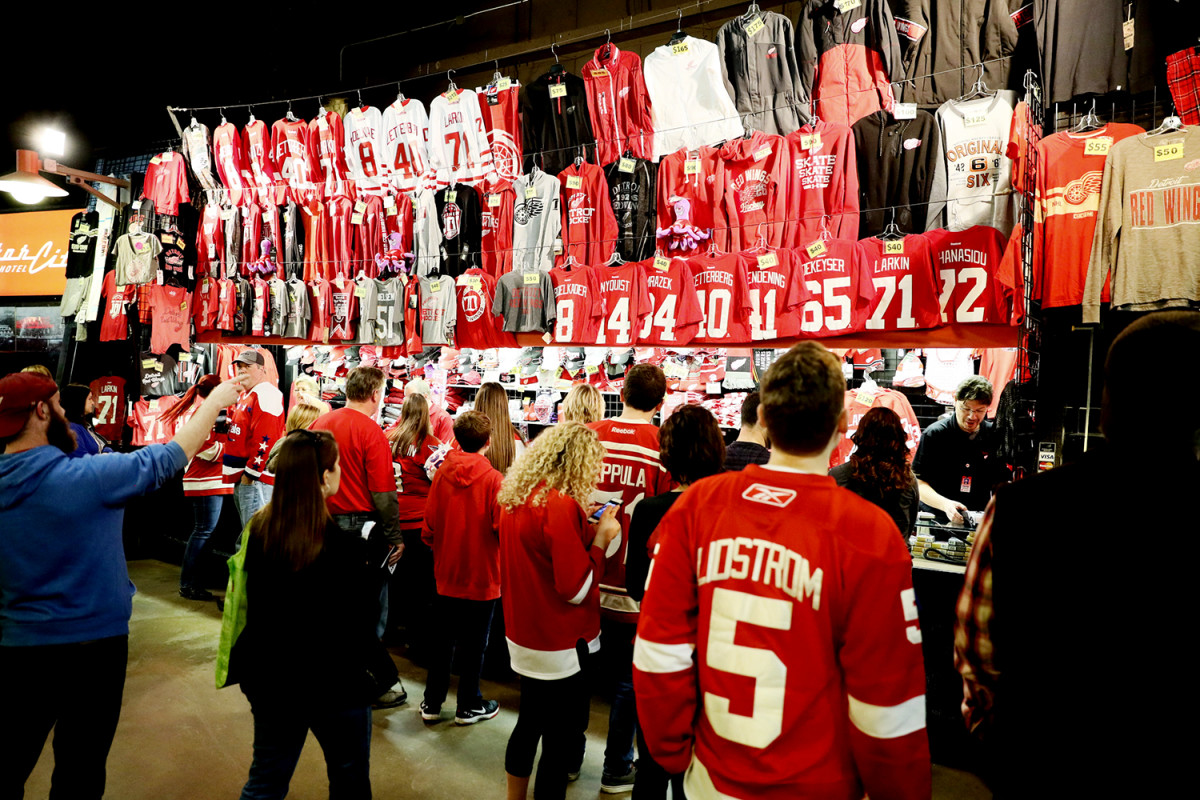
Arena operations manager Al Sobotka in his office, 2003
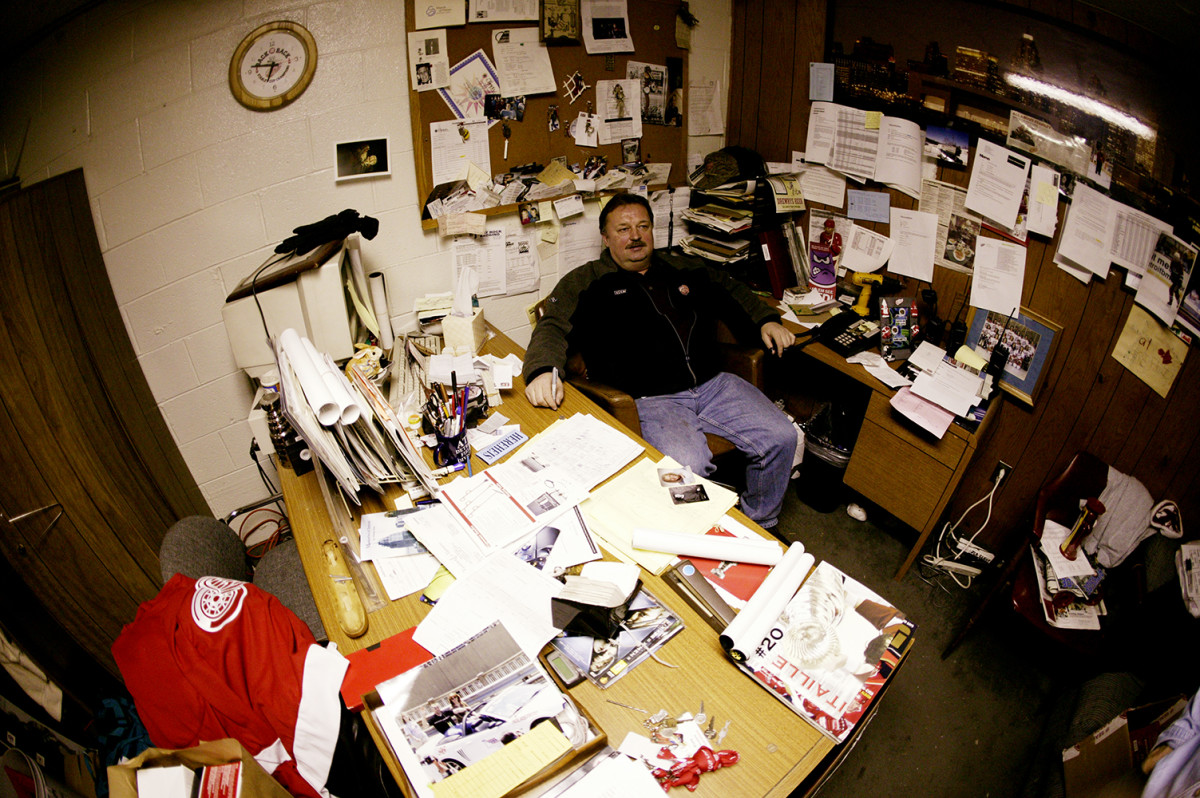
Michigan native Dylan Larkin now plays for the team he watched growing up, 2017
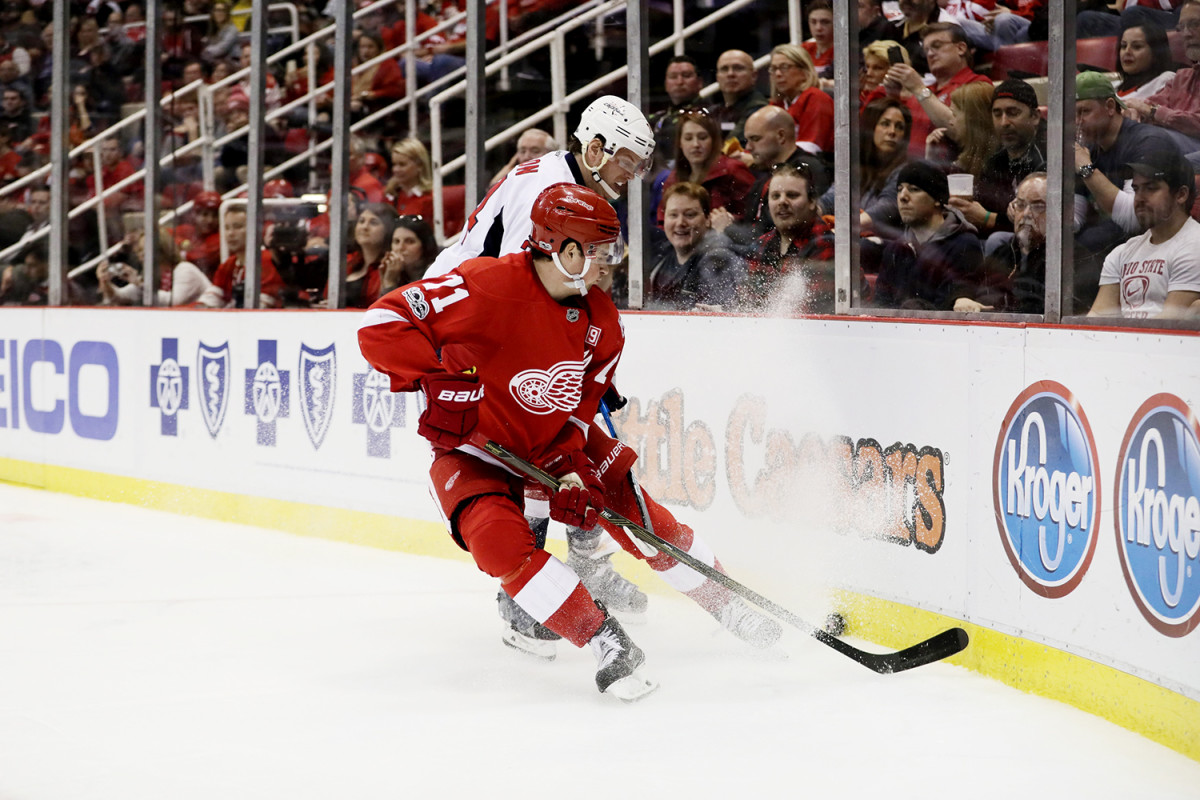
SI cover shoot of Chris Chelios, Brett Hull, Brendan Shanahan and Lidstrom, 2002
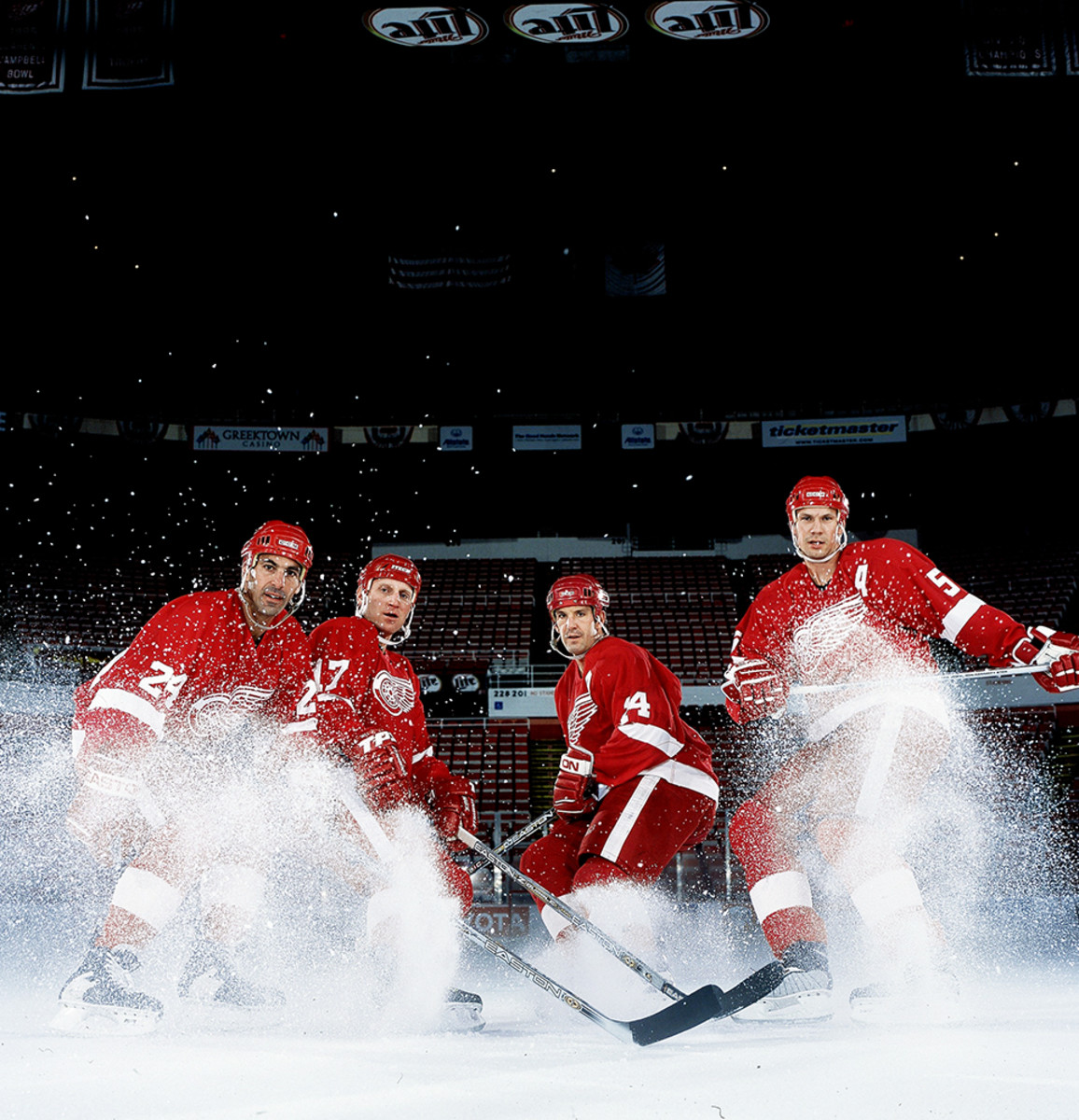
Commemorative game puck, 2017
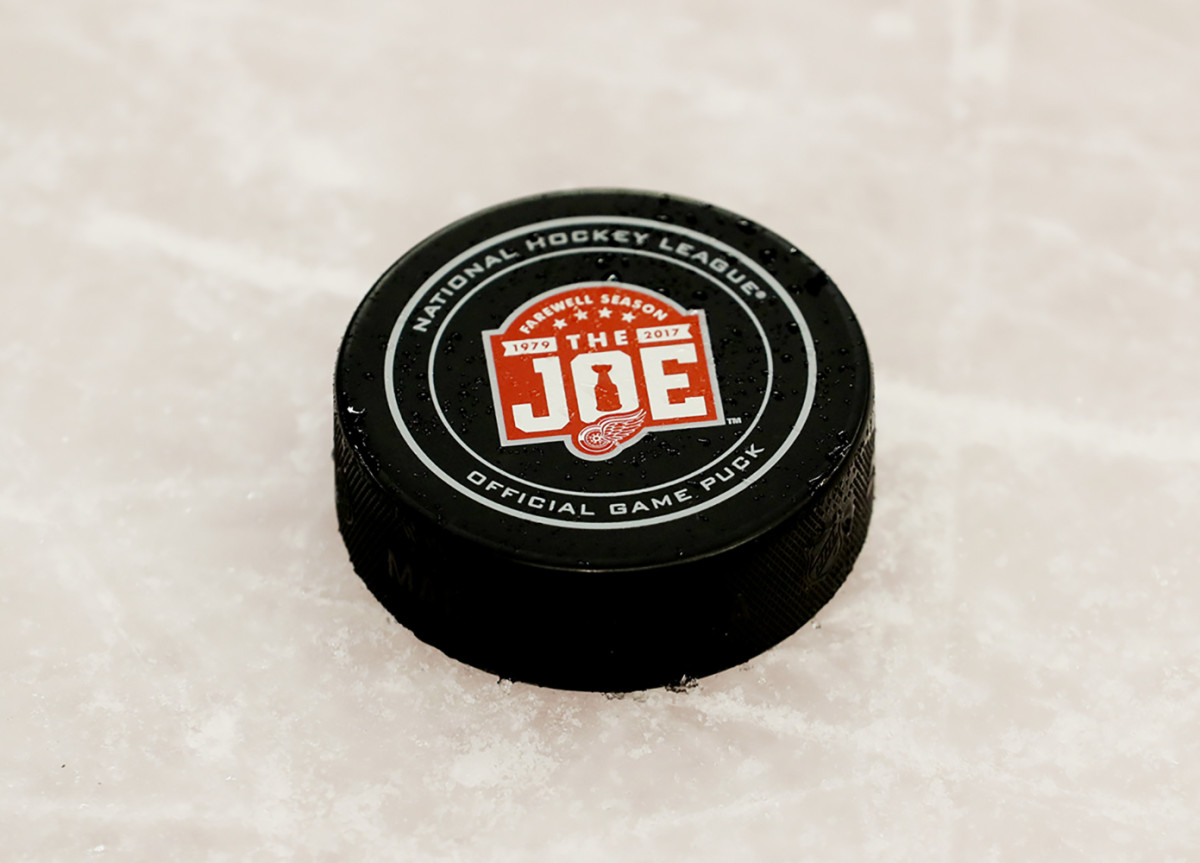
Two Zambonis resurface the ice, 2003
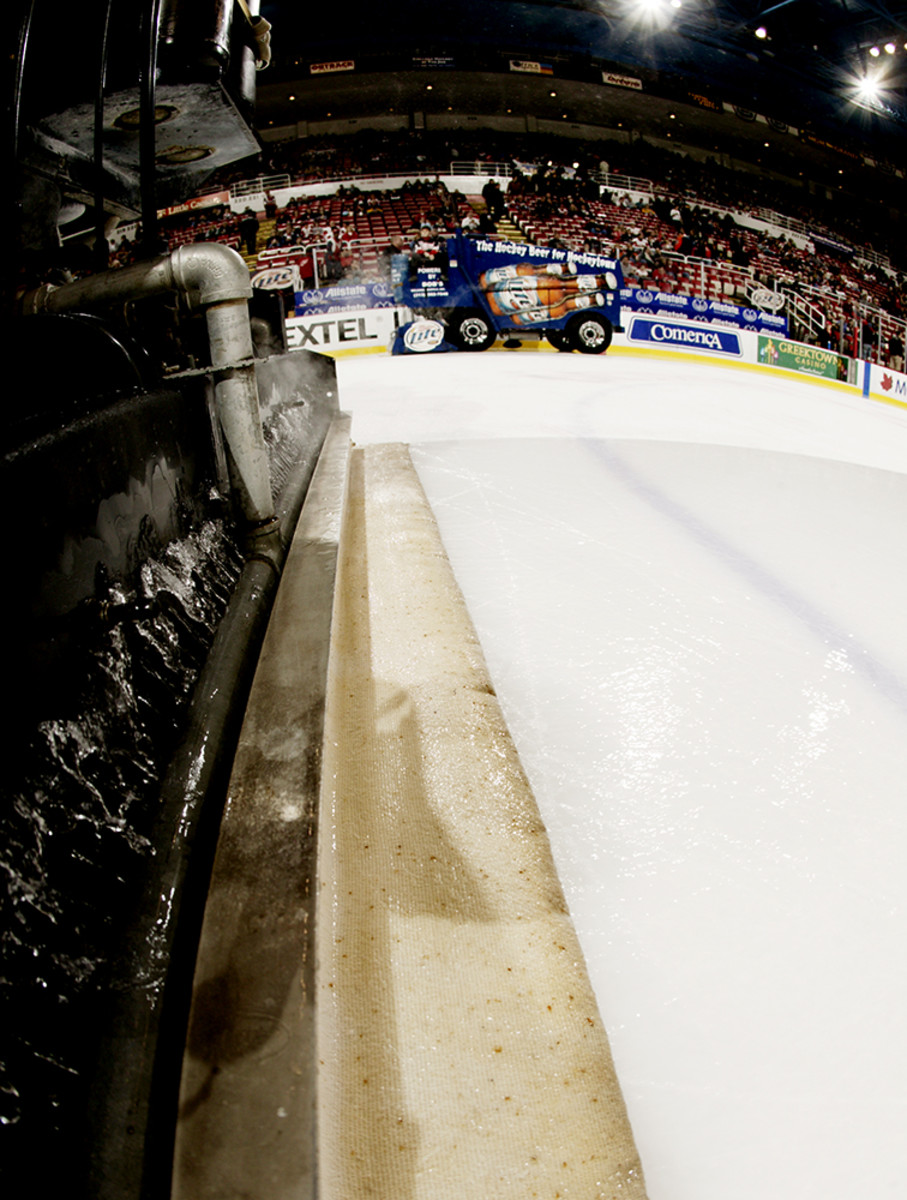
Action near the players’ benches, 2017
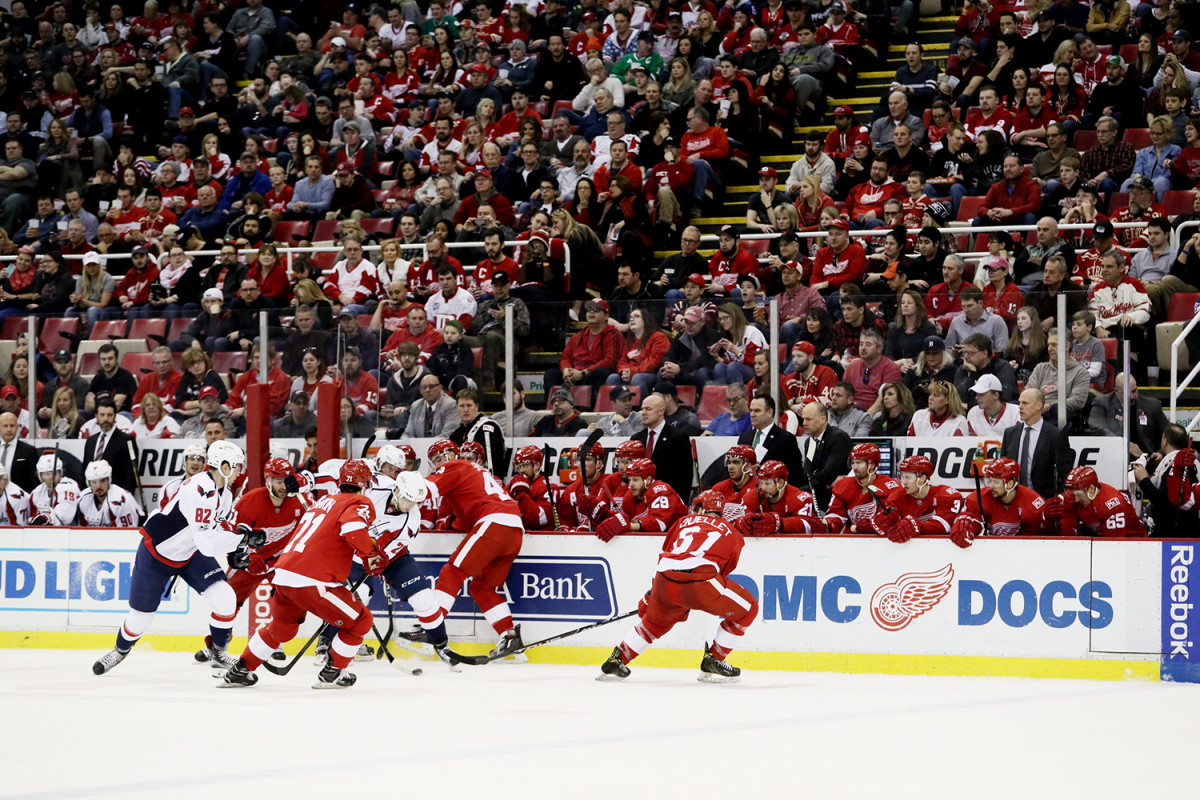
Pavel Datsyuk at the bench, 2005
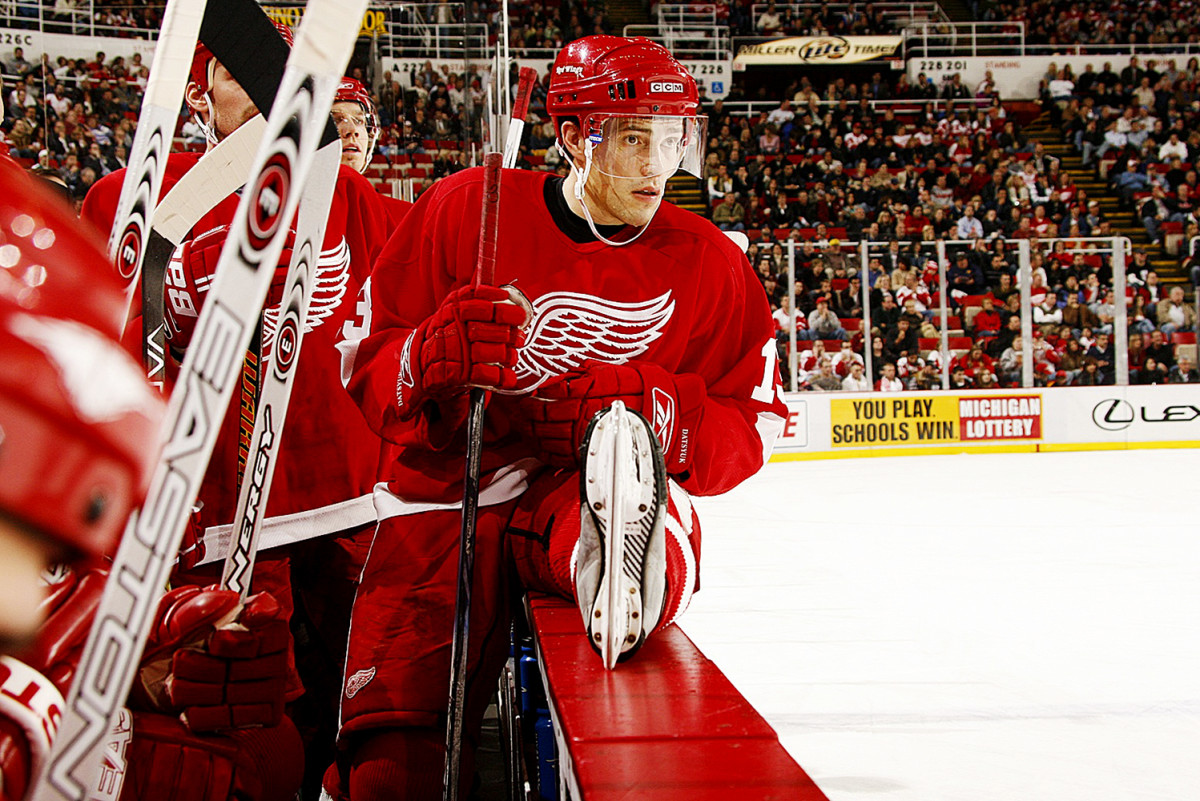
Kids love the octopus, 2017
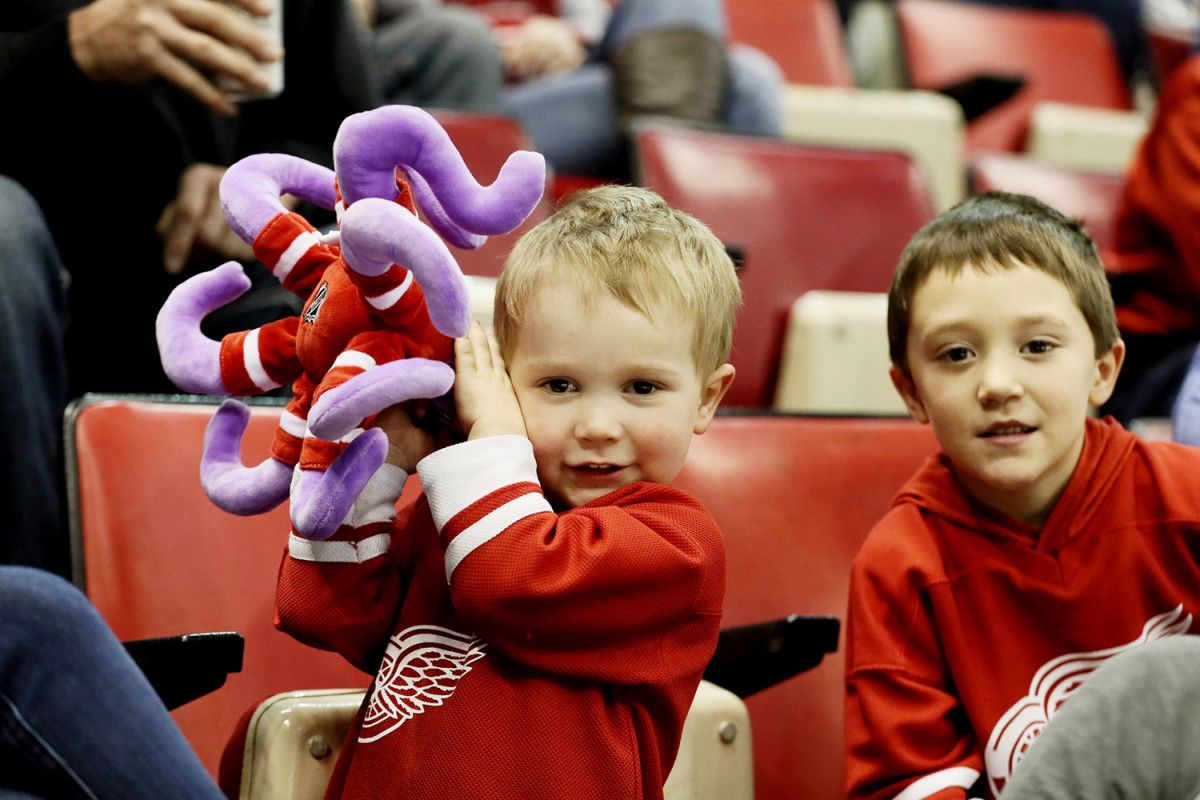
Sobotka slings an octopus, 2009
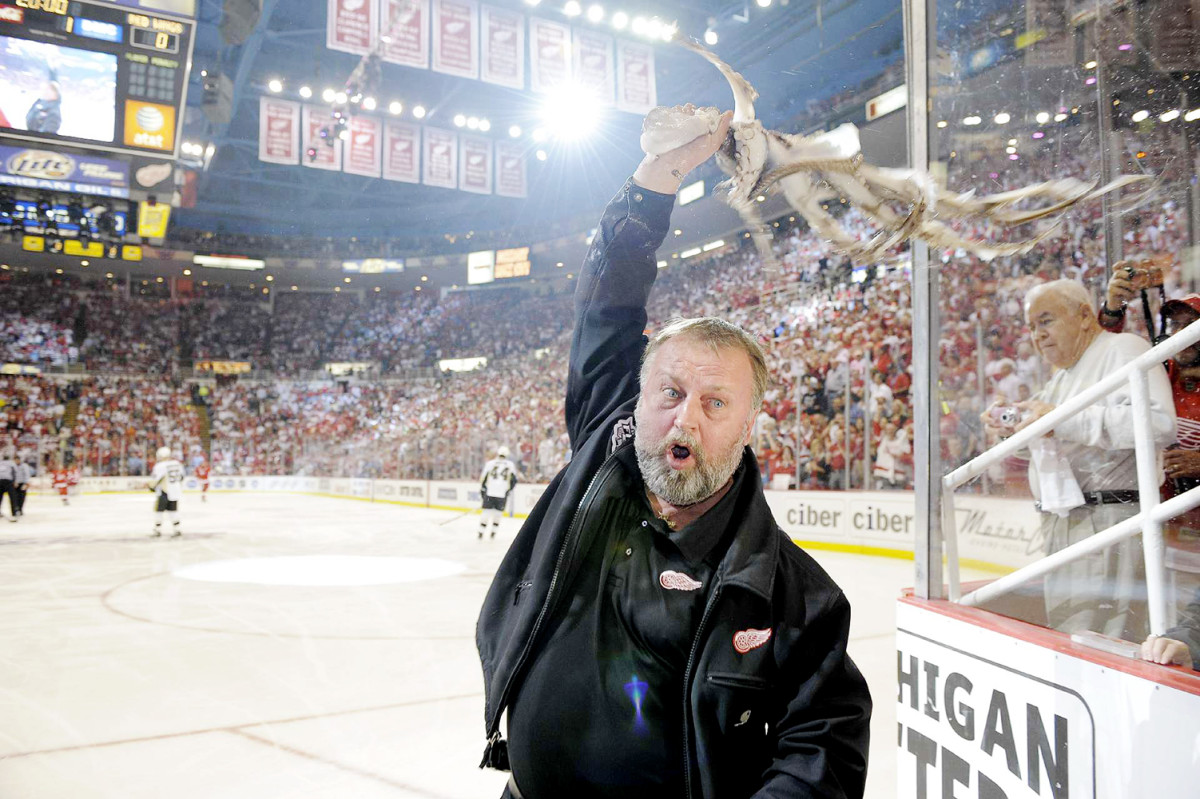
The Wings wear tribute patches for Gordie Howe (9) and Mike Ilitch (Mr. I), 2017
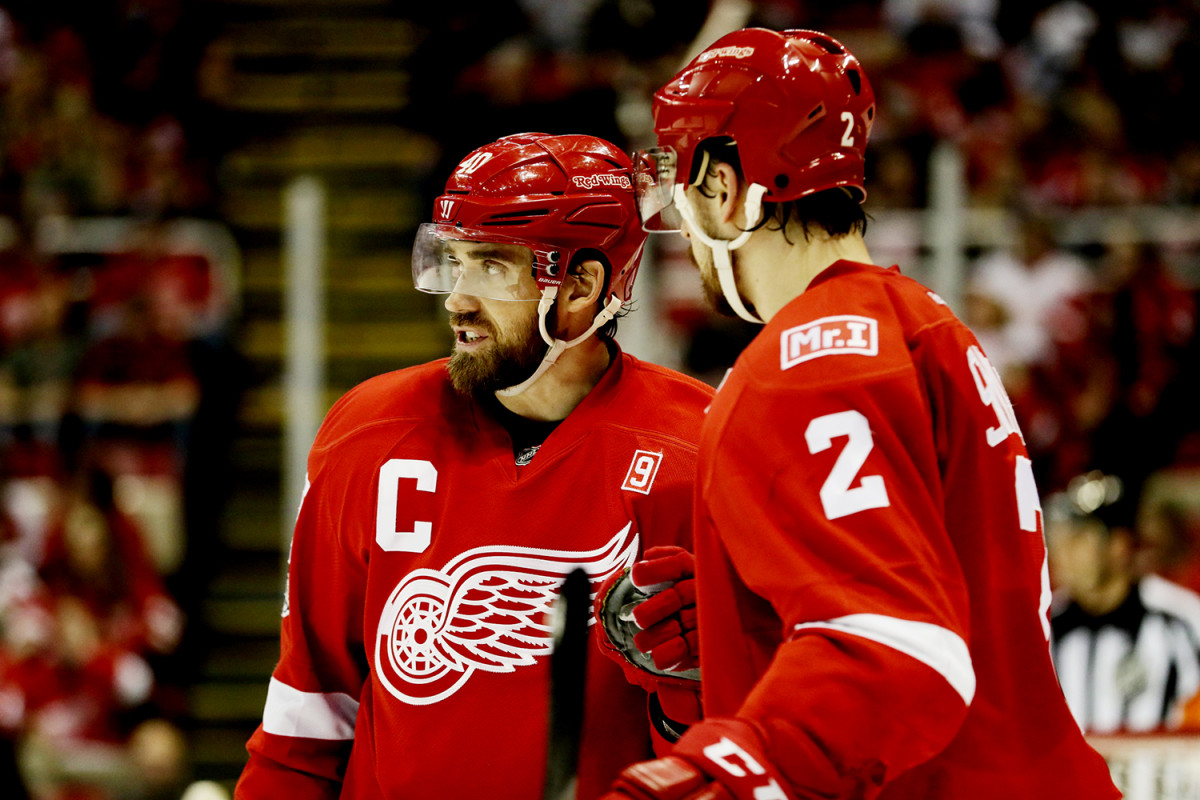
Lidstrom’s locker, 2008
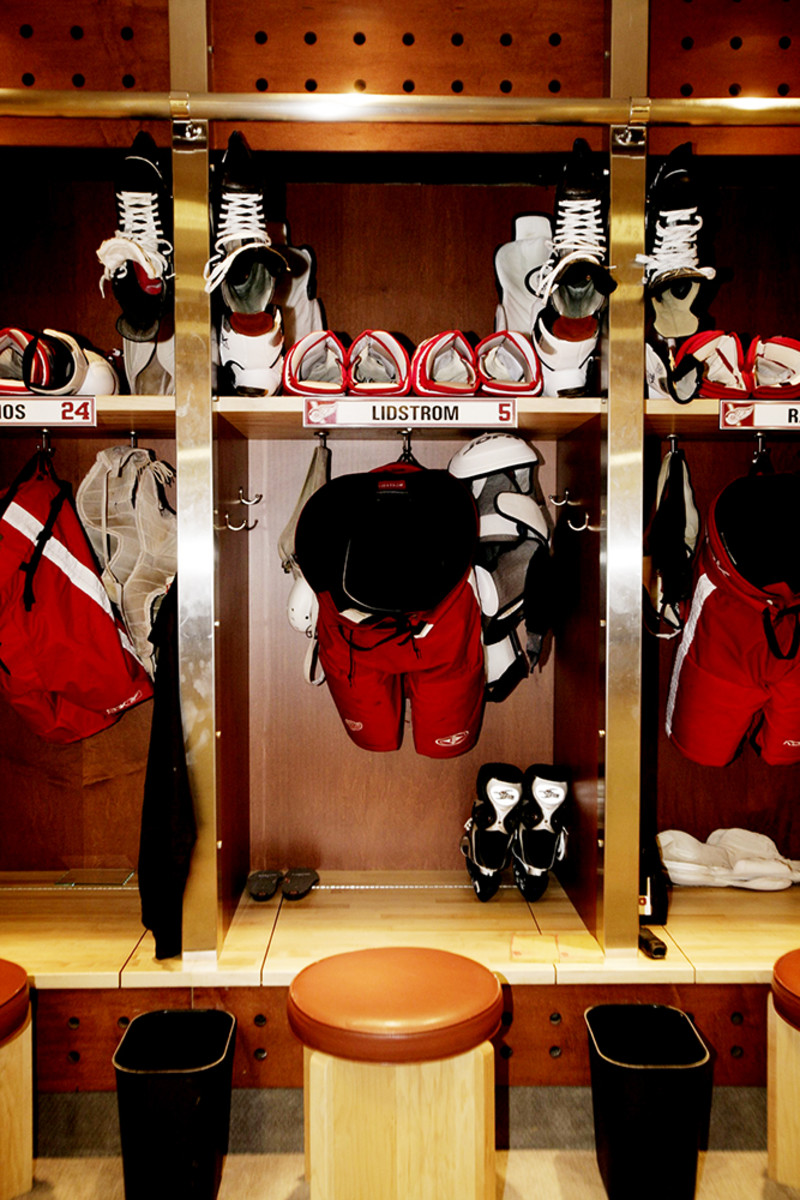
Wings fans celebrate, 2017
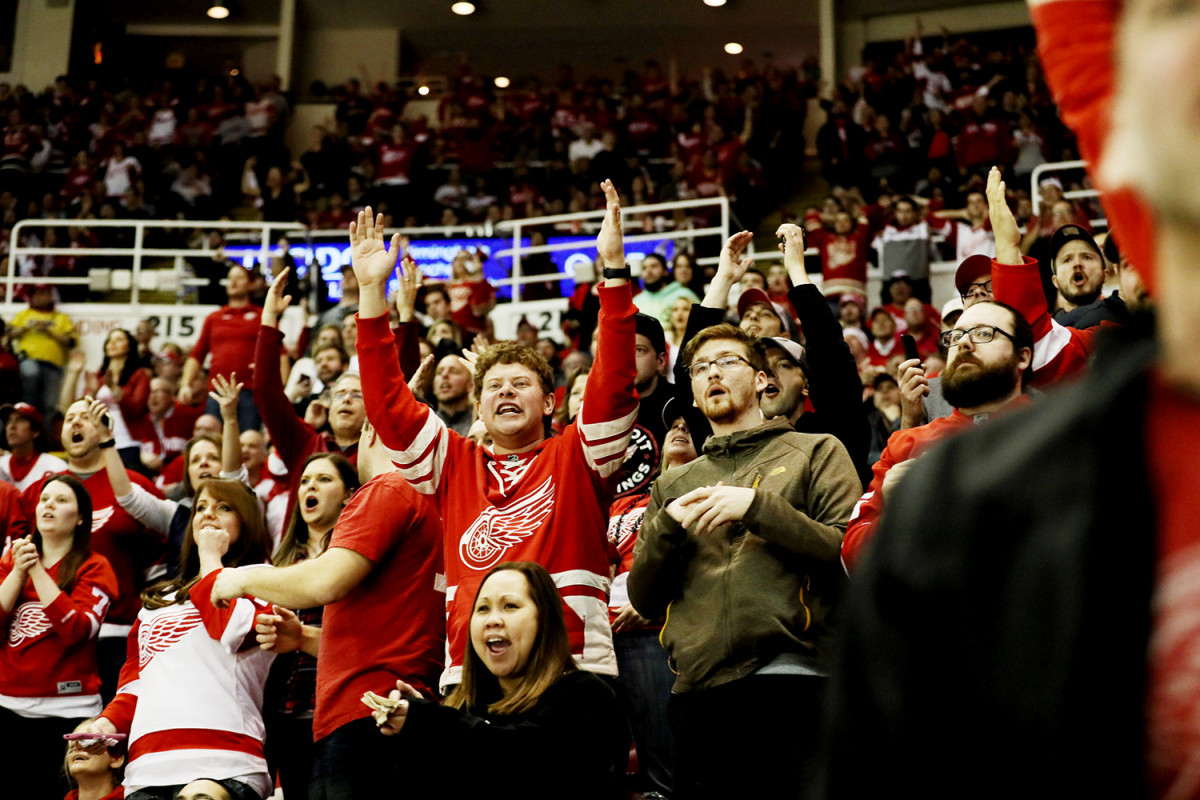
Traffic in the goalmouth, 2004
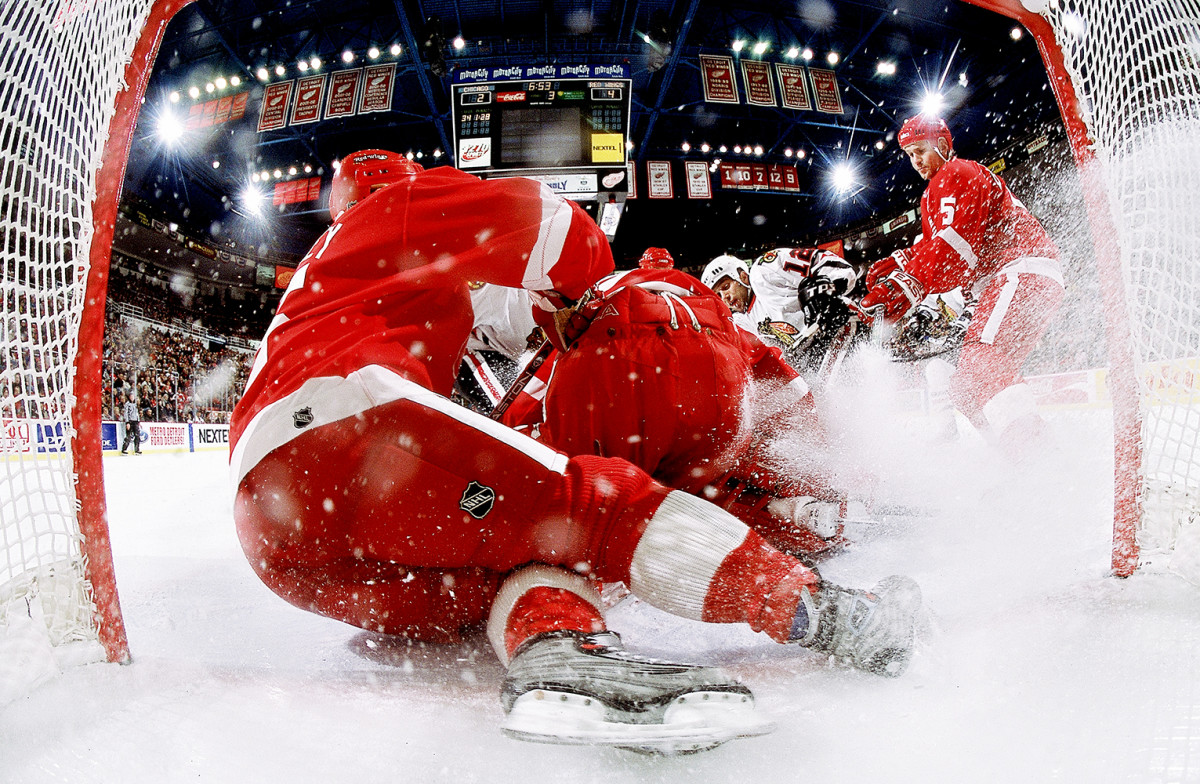
Home of the Red Wings, 2017
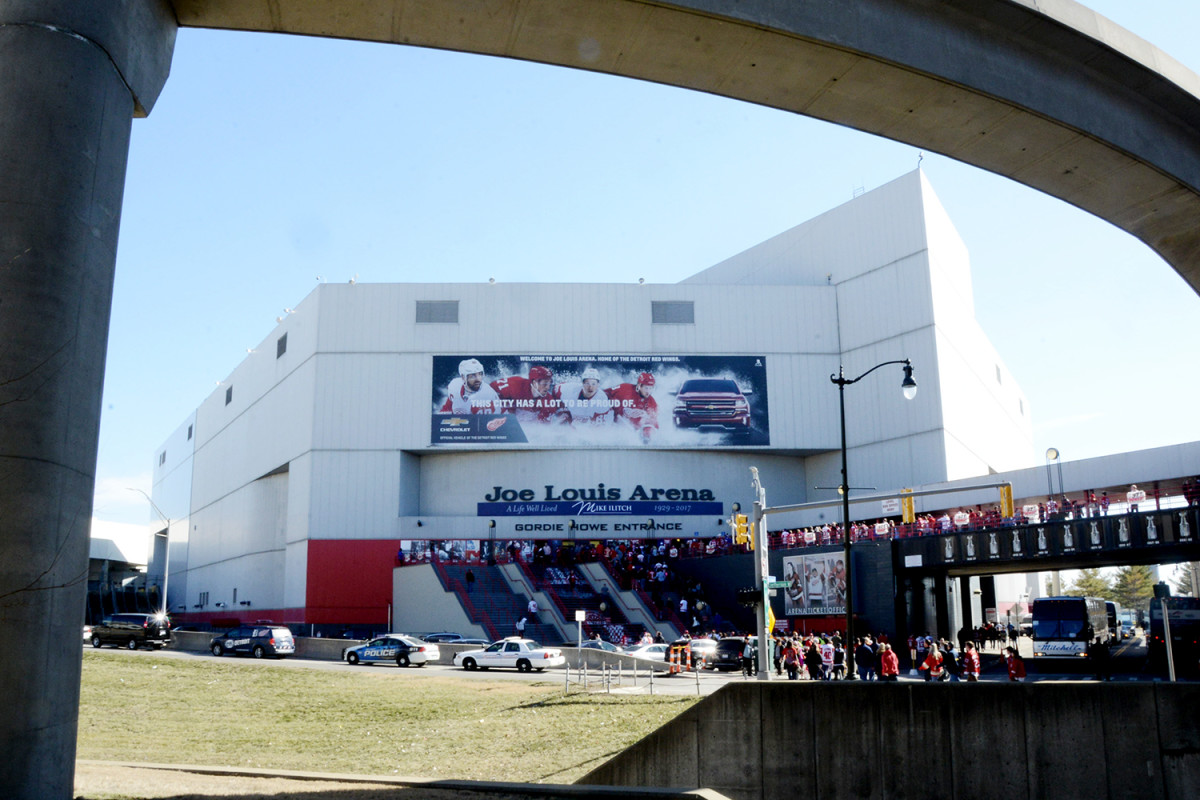
And then there were those 2002 champions, perhaps the most distinguished team in the history of sports. Fans marveled at the collection of surefire Hall of Famers: captain Steve Yzerman, Fedorov, Hull, Lidstrom, Chris Chelios, Dominik Hasek, Igor Larionov, Luc Robitaille, Brendan Shanahan and Bowman. Turns out, even that count would be underestimating. Pavel Datsyuk, who was a rookie on that team, could make it 11. Datsyuk, the Magic Man, was a master of stealing the puck, and he had this dry, deadpan wit, and—
Can you speak up? I can’t hear you over that thwacking sound.
Sure. Sorry. It’s so loud because the boards behind the goals are made primarily of wood, not plastic or composites like in newer arenas. Pucks take big bounces—so big that Lidstrom would intentionally shoot wide of the net, sending the puck bouncing back to forward Tomas Holmstrom, who had squatter’s rights in front of the net. Lidstrom practiced missing so often that the Wings had to rebuild the endboards once or twice a year. And it paid off: Over 15 seasons, including playoffs, Lidstrom had assists on 50 Holm-strom goals at home, compared with 39 on the road.
Even on a team with 10 ... whoops, 11 Hall of Famers, they called Nick “the perfect human.”
Those Red Wings routinely traded prospects and draft picks for established stars. They signed players to big contracts lasting past their prime. After he made a trio of trade-deadline deals one year, general manager Ken Holland told the Los Angeles Times, “We’re going to feel this down the road. We made these deals, obviously, for now. And by now, I mean this year and a couple more seasons, maybe three.... At some point we’re going to have to rebuild.”
That was in 1999. Five years later the league shut down for a season. It emerged with a salary cap and a system designed to bring big spenders back to the pack. The NHL has completed 11 seasons since that lockout. The only franchise to make the playoffs all 11 times: the Red Wings.
***
Let’s talk about luck.
“Got to have it,” says Holland, as he sits in his cramped office. “Got to have it.”
During those peak years the Red Wings drafted Datsyuk in the sixth round and Henrik Zetterberg in the seventh. They didn’t know the pair would turn out to be among the best two-way players in the world. But they still took them before anybody else did, and anyway: You want to talk about luck? Fine.
In 1997, shortly before finishing second in the Norris Trophy voting, 30-year-old Vladimir Konstantinov nearly died in a limousine accident. He never played again. A few months later former first-round pick Jesse Wallin was injured in a car accident and was never the same.
In 2003 the Red Wings’ top prospect, Russian right wing Igor Grigorenko, nearly died in a car accident. He never played in the NHL. And in a 2005 game, 25-year-old defenseman Jiri Fischer suffered a cardiac arrest on the bench and never played again.
We tend to focus on bad luck for bad teams and good luck for good ones. But luck does not explain the streak. It does not explain Jimmy Devellano, the franchise’s modern architect, voluntarily ceding power to Holland in 1997, rather than let his bright protégé take a GM job with another organization. Or legendary scout Håkan Andersson routinely finding European players that his peers missed. Luck does not explain the respect Holland built with players and agents, a man with a small ego massaging all those big ones.
Mike Ilitch's passion for Detroit and winning endeared him to Red Wings, Tigers fans
Holland may have done his best work when it was hardest. As that 2004–05 lockout ended, he quickly studied all the new rules, on and off the ice, and reshaped his roster accordingly. He also shrewdly fired coach Dave Lewis, even though he had led the Red Wings to the Presidents’ Trophy the season before. Lewis was beloved, but Holland says, “When you hear everybody likes the coach, you get nervous.”
Holland replaced Lewis with Mike Babcock. Not everybody liked Babcock. But they played hard for him, and in 2008, three years after a lockout was supposed to end their dominance, the Wings won the Cup again, their 11th. We could talk for hours about those ’08 Wings, who didn’t have as many stars as in ’02 but seemed to go weeks without turning the puck over, and—
I gotta pee.
There are restrooms upstairs. And before you ask: Yes, those big troughs are urinals.
***
You back? Good. Now let’s walk.
Can I bring my beer?
Sure. Nobody will notice. This place is growing on you, isn’t it?
One could call the Joe a triumph of function over form, but honestly, it’s not that functional. The wooden benches are too short. The team’s media relations staffers are wedged so closely together, they could share a shirt. Ask equipment manager Paul Boyer where he keeps supplies, and he says, “I have a storage cage on the fifth floor; I have a room down the hall... . I’m all over the map.”
The press box is so small it seems like an afterthought, which it was—they forgot to put one in when they built the place. Nobody goes on a hunger strike to protest working conditions for sports-writers, but understand: Management sits up there, too.
In all, the Joe feels like a local rink with 20,000 seats attached. When the Red Wings won the Stanley Cup in 1997, ending their 42-year drought, they celebrated by painting everybody’s name on a cinder block wall outside their locker room, the way you might celebrate a Bantam or Midget title. They have added similar homages for the ’98, 2002 and ’08 teams, along with individual award winners.
Look over here, at the old street sign hanging like somebody stole it and brought it back to a dorm:
OLYMPIA STADIUM
EXIT WARREN AVENUE
What’s the Olympia?
That’s where the Red Wings played from 1927 (when they were the Cougars) until the Joe opened in 1979. Anyway, keep walking, turn right, and you’ll find Boyer’s office. This is where Shanahan would hide when he arrived late for practice (though before the team was on the ice). Shanahan would sneak in, get dressed, grab a cup of coffee from Boyer, walk into the locker room and say he had just been checking out his sticks. Says Boyer, “Nobody ever knew that he was late.”
The Joe is a vestige of an era when arenas were simply places to host sporting events. And that’s how it always feels. It has exactly what you need and not much more. As Boyer says, “Hockey just drips out of the walls.”
Henrik Zetterberg staying upbeat as he leads the Red Wings through a frustrating year
Now look in the locker room. See Frans Nielsen’s stall? The photo of Yzerman hanging above it is no coincidence: This was Stevie’s. That little mark on the wall? Yzerman used it to measure his sticks.
Hey, look who is here. Say hi to Dylan Larkin.
Hi, Dylan Larkin.
Maybe he can explain.
***
When Larkin was a kid in Waterford, Mich., he’d put on his red Zetterberg jersey and go to the Joe. The Red Wings drafted him in 2014, and a year later, he left the University of Michigan after two semesters, partly because he wanted to play for the Wings before the Joe closed.
The weird thing is that Larkin had already played at the Joe; in youth tournaments, and then at Michigan. But playing there as a Wing was different, like playing on your local high school field with the varsity after years of playing catch there every summer.
In his two NHL seasons Larkin has seen an era end. Babcock left for Toronto in 2015. Datsyuk went home to Russia last summer after the Red Wings lost in the first round of the playoffs for the third straight season. After four years of essentially fighting to be a bubble team, they now sit at the bottom of the Eastern Conference standings. They were active before the March 1 trade deadline, only this time as sellers—a tacit acknowledgement that the streak will likely end this year.
Mr. I won’t see it end. He died last month at 87. The city mourned, but perhaps the best testament to Ilitch’s life and his influence on Detroit is that the city no longer needs him. After a generation of steady decline, Detroit is finally coming back. Trendy restaurants and stores pop up almost weekly. Skyscrapers are being planned.
And in midtown, Little Caesars Arena will open in a few months. It will host both the Red Wings and the Pistons, who are moving from the Palace of Auburn Hills. The Pistons won three NBA championships in their Palace years, but their departure has not evoked much nostalgia. Tickets to several games were available on StubHub recently for as low as $6. The worst seats at the Joe go for 10 times that much. The Pistons are moving from one really nice arena to another. Fans feel as if the Red Wings are leaving their ... what is the best way to say this ... their ...
Childhood home?
Yes. See? You do get it. The new place will have a practice facility and a modern weight room with a track. Boyer will have three washing machines instead of one, and four dryers instead of two. Larkin says it will “be awesome having everything new, state-of-the-art. But the intimacy of this locker room, how small it is... . There’s nowhere to hide. That’s what I love about this locker room.”
‘It changed my life:’ Wayne Gretzky on the first time he met Gordie Howe
Look down. See that Winged Wheel in the carpet? The team will take it with them. And when there is an empty stall, Boyer will continue to put the name HOWE or LINDSAY or SAWCHUK over it, to remind the Red Wings of their history.
A feeling, though, is harder to transfer. Holland only had two requests for the new rink. One was the practice facility. The other was the sight lines. He wanted them to remain the best in the league, and for good reason. When the puck drops in the Red Wings’ new home, he wants fans to settle in and think ...
Wow, what a great place to watch a hockey game. It almost feels like the Joe.
